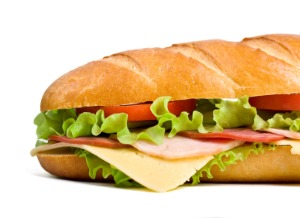
If $5 Foot-Longs Sell, then Why Not $5 Checking Accounts?
Brought to you by StrategyCorps

 You may have recognized that Subway is running their $5 foot-long sandwich campaign again. (Are you like me, once you hear that jingle, it’s almost impossible to get it out of your head?)
You may have recognized that Subway is running their $5 foot-long sandwich campaign again. (Are you like me, once you hear that jingle, it’s almost impossible to get it out of your head?)
So while I was humming this jingle, this got me thinking—why are consumers willing to pay $5 for an average foot long sandwich ( I don’t claim to be a sandwich connoisseur or even a sandwich “artist,” but I eat plenty of sandwiches and put Subway’s in the average category at best), yet are extremely/ violently reluctant to pay a similar amount monthly for a checking account? The checking account, after all, provides a tremendous amount of security, access and convenience when it comes to doing a financial transaction with a third party.
Looking beyond, but not overlooking, the overall consumer sentiment that one should not have to pay for access to use one’s own money, what strikes me is that consumers don’t see the offering of a “good deal” as benefit of a checking account.
Part of this is brought about due to the utter domination of free checking for the last decade or so, which has numbingly conditioned consumers that checking and all things checking-related should be free. But another big part of this is because banks and credit unions haven’t put a “good deal” in their checking accounts in terms of account benefits that help the consumer save money when they have to spend it. And they won’t promote it like they should to let their customers know they have a “good deal” in their checking product. In essence, that’s what the $5 foot-long sandwich does. It saves a consumer a buck or two when they have to spend it on lunch or dinner. And Subway uses it effectively as part of their customer connection/engagement strategy.
It seems that with the success of daily-deal companies like Groupon and LivingSocial, and the all-time high usage rate of coupons, paper and electronic, by consumers of all demographics (even the affluent), that banks are reluctant to include or promote these kinds of discounts as a checking account benefit. It’s easy to calculate a tangible dollar savings here and let’s face it, saving money on a sandwich or an oil change or on a hotel room is much more appealing and competitively different than a discount on a safe deposit box or free cashier’s checks.
At a time where there’s no debate that every bank and nearly every credit union needs more fee income and that the public won’t readily accept fee income that is not customer-friendly and adds no incremental value, it is time to re-think the benefits that consumer checking accounts’ delivers to consumers.
If you can successfully figure this out then you might hear folks humming, “five dollar…, five dollar…, five dollar checking accounts.” And if your financial institution could sell a just fraction of these compared to the number of $5 dollar foot-longs sold, you would be well on your way to finding fee income that is getting smaller and smaller every month.


